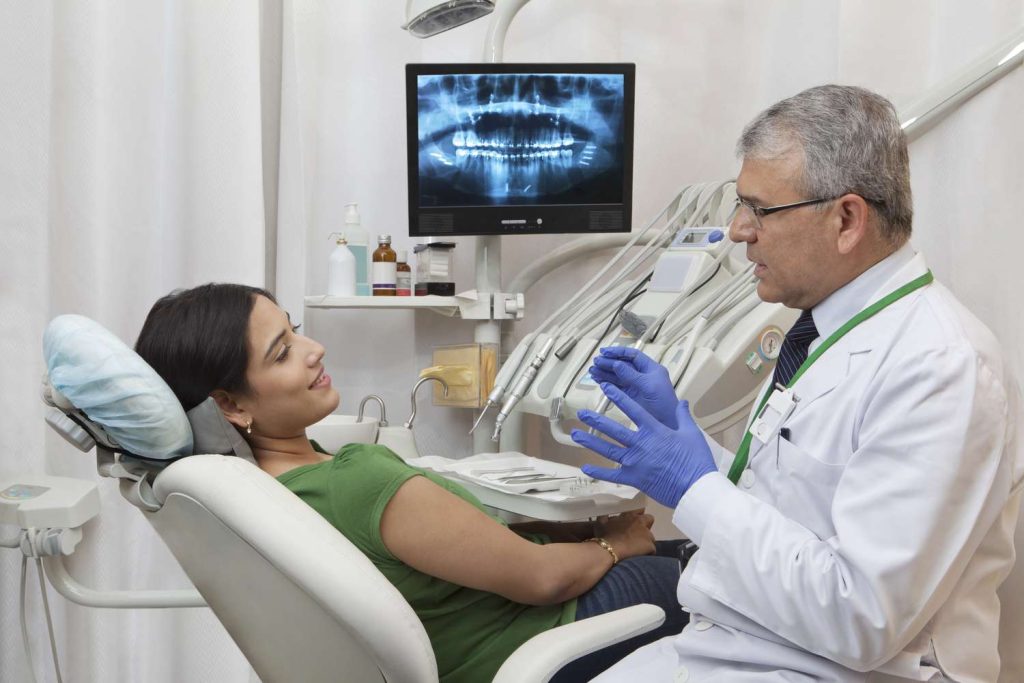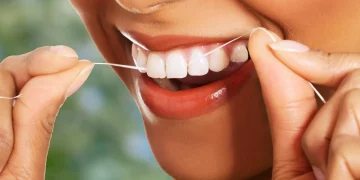Introduction
Undergoing a dental treatment is an important step toward achieving a healthier, more confident smile. Whether it’s dental implants, crowns, fillings, orthodontic treatments, or cosmetic procedures like teeth whitening, the treatment itself is just the beginning. To ensure that the effects are long-lasting and that your oral health remains in optimal condition, proper post-treatment care is essential.
The care you take after your dental treatment can have a significant impact on the success and longevity of the procedure. In this article, we’ll explore the key post-treatment care steps for different dental procedures, and discuss how to ensure the results last for many years.
1. Post-Treatment Care for Dental Implants
Why Dental Implants Require Special Care:
Dental implants are designed to last a lifetime, but they need time to integrate with your jawbone and healing to take place. Proper aftercare is critical to ensure the implants remain stable and avoid complications such as infection or implant failure.
Post-Treatment Steps:
- Follow Your Dentist’s Instructions: After the implant procedure, your dentist will provide specific guidelines for aftercare. These may include avoiding certain foods, taking prescribed medications, and applying cold compresses to reduce swelling.
- Manage Swelling and Discomfort: Swelling and discomfort are normal after implant surgery. Use ice packs in the first 24-48 hours to minimize swelling. Pain medications prescribed by your dentist can help manage discomfort.
- Maintain Oral Hygiene: After the initial 24 hours, gently clean your mouth, brushing and flossing around the implant site. Be careful not to disturb the surgical site. Use an antimicrobial mouthwash to reduce the risk of infection.
- Avoid Smoking and Alcohol: Smoking and drinking alcohol can impair the healing process and increase the risk of complications. Avoid these habits during the healing phase, which can take several months.
- Eat Soft Foods: For the first few days or weeks, stick to soft, non-chewy foods to avoid putting pressure on the implant site. Avoid hard, crunchy, or sticky foods that can irritate or dislodge the implant.
How to Ensure Long-Lasting Results:
- Regular Check-Ups: Visit your dentist for follow-up appointments to ensure that the implants are integrating well with the bone. Early detection of problems can help prevent long-term issues.
- Good Oral Hygiene: Keep the implant area clean to avoid plaque buildup, which can lead to gum disease around the implant (peri-implantitis). Use special cleaning tools like an implant brush or water flosser to clean around implants effectively.
2. Post-Treatment Care for Crowns and Bridges
Why Crowns and Bridges Need Proper Care:
Dental crowns and bridges are restorations that are placed over damaged or missing teeth. Although they are durable, they still require careful care to ensure that the restoration lasts and functions properly.
Post-Treatment Steps:
- Avoid Hard Foods: For the first few days after the procedure, avoid biting into hard foods that can cause the crown or bridge to become loose or break.
- Check for Sensitivity: It’s common to experience some sensitivity after crown or bridge placement. If the sensitivity persists for more than a few weeks, consult your dentist.
- Avoid Sticky or Chewy Foods: Foods like caramel, taffy, and chewing gum can pull at the crown or bridge, potentially loosening it. Try to avoid such foods during the initial healing phase.
- Good Oral Hygiene: Brush and floss your teeth carefully to prevent plaque buildup around the edges of the crown or bridge. Special floss threaders can help clean around the restoration.
How to Ensure Long-Lasting Results:
- Regular Dental Check-Ups: During regular check-ups, your dentist will ensure that your crowns and bridges are still in good condition and fit properly.
- Avoid Teeth Grinding: If you tend to grind your teeth (a condition known as bruxism), consider wearing a night guard to protect your crown or bridge from unnecessary wear.
3. Post-Treatment Care for Fillings (Including Composite, Amalgam, or Resin)
Why Fillings Need Proper Aftercare:
Dental fillings are used to restore teeth that have cavities or decay. After a filling, the treated tooth may be sensitive to temperature or pressure, especially in the first few days.
Post-Treatment Steps:
- Avoid Chewing on the Treated Side: For the first 24 hours, try to avoid chewing on the side of the filling to allow it to harden properly.
- Monitor Sensitivity: If your tooth is sensitive to hot, cold, or pressure after the filling, it should gradually subside. However, if the sensitivity persists or worsens, consult your dentist.
- Avoid Sticky Foods: Sticky foods like caramel and chewing gum can cause fillings to become dislodged. Avoid such foods until your dentist confirms the filling is properly set.
How to Ensure Long-Lasting Results:
- Practice Good Oral Hygiene: Brush and floss regularly to prevent future cavities around the filling. Plaque buildup can lead to secondary decay, which can undermine the filling.
- Regular Check-Ups: Schedule regular dental exams to check for wear and tear on the filling, especially if it’s a composite filling that may stain or wear down over time.

4. Post-Treatment Care for Teeth Whitening Procedures
Why Teeth Whitening Needs Careful Follow-Up:
After undergoing professional teeth whitening, your teeth may be temporarily more sensitive, and your results need to be maintained through proper care to keep your smile bright.
Post-Treatment Steps:
- Avoid Staining Foods and Drinks: For at least 24-48 hours after whitening, avoid foods and beverages that can stain your teeth, such as coffee, tea, red wine, berries, and tobacco.
- Use a Soft Toothbrush: Brush your teeth gently for the first few days after treatment to avoid irritation. Use a toothpaste that is designed for sensitive teeth if you experience discomfort.
- Hydrate and Rinse: Drink plenty of water to help wash away food particles and prevent staining. Rinsing your mouth after eating can help remove staining substances.
How to Ensure Long-Lasting Results:
- Touch-Up Treatments: Depending on the type of whitening procedure, you may need periodic touch-up treatments, especially if you frequently consume staining foods and drinks.
- Maintain Oral Hygiene: Brush and floss regularly to prevent plaque buildup and staining. Regular professional cleanings can also help maintain the brightness of your smile.
5. Post-Treatment Care for Orthodontics (Braces, Aligners, Retainers)
Why Orthodontic Treatments Need Special Care:
Braces, aligners, and retainers require special attention to ensure that the teeth move into their correct position, and to maintain the final result.
Post-Treatment Steps:
- Follow the Orthodontist’s Instructions: After your braces or aligners are applied, follow all of your orthodontist’s instructions, including wearing elastics, changing aligner trays, and attending regular check-ups.
- Monitor Discomfort: It’s common to experience some discomfort or soreness after adjustments or when you start wearing aligners. This is normal and should subside within a few days.
- Maintain Cleanliness: Keep your braces or aligners clean to avoid plaque buildup. Use an orthodontic toothbrush, floss threaders, and interdental brushes to clean around the brackets and wires effectively.
- Avoid Hard and Sticky Foods: If you have braces, avoid hard, sticky, or chewy foods that can damage the brackets or wires. With aligners, be sure to remove them before eating to prevent staining or damage.
How to Ensure Long-Lasting Results:
- Wear Retainers as Directed: After your orthodontic treatment is completed, wearing a retainer is essential to keep your teeth in their new positions. Your orthodontist will advise how long to wear the retainer each day.
- Regular Follow-Ups: Schedule regular orthodontic check-ups to ensure your treatment is progressing as planned.
6. Post-Treatment Care for Gum Disease Treatment (Scaling and Root Planing)
Why Gum Disease Treatment Needs Aftercare:
Treatments for gum disease, such as scaling and root planing, remove plaque and tartar from beneath the gumline to improve gum health. Post-treatment care helps prevent the recurrence of gum disease and promotes healing.
Post-Treatment Steps:
- Avoid Smoking and Alcohol: Smoking and alcohol can slow down healing and contribute to gum disease. Avoid these habits for at least 48 hours after treatment.
- Maintain Gentle Oral Hygiene: Gently brush and floss around the treated areas. Your dentist may recommend using an antimicrobial mouthwash to help reduce bacteria and promote healing.
- Avoid Hard or Crunchy Foods: After gum treatments, stick to soft foods for the first few days to prevent irritation or discomfort.
How to Ensure Long-Lasting Results:
- Regular Cleanings: Schedule professional cleanings every 3-6 months to maintain your gum health and prevent further buildup of plaque and tartar.
- Healthy Lifestyle Choices: Maintain a healthy diet, avoid smoking, and practice good oral hygiene to keep your gums healthy and prevent gum disease from returning.
Conclusion
The success of any dental treatment depends not only on the procedure itself but also on the post-treatment care you follow. By adhering to proper aftercare steps—such as managing discomfort, maintaining good oral hygiene, and following your dentist’s advice—you can ensure that your dental work lasts longer and provides lasting benefits. Whether it’s dental implants, crowns, orthodontics, or gum treatments, taking the right steps after the procedure can make all the difference in the longevity and effectiveness of your treatment.
Remember, your dentist is your partner in oral health, and following their recommendations will help you maintain a bright, healthy, and confident smile for years to come.













































Discussion about this post